Your cart is currently empty!
Month: July 2024
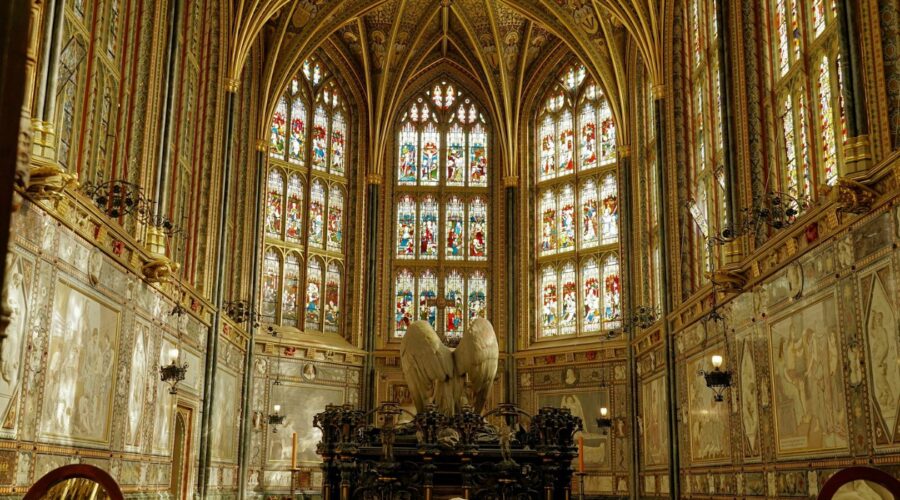
Westminster Presbyterian: A Comprehensive Guide
History
Westminster Presbyterian Church is a historic Presbyterian congregation in Minneapolis, Minnesota. Founded in 1857, the church has been a prominent part of the city’s religious and civic life for over 150 years. The church’s first building was constructed in 1858 at the corner of Nicollet Avenue and 12th Street. In 1886, the congregation moved to a new building at the corner of Nicollet Avenue and 16th Street. This building was designed by the著名建築家H.H.Richardson and is considered a masterpiece of Romanesque Revival architecture.
In 1960, Westminster Presbyterian Church merged with the First Presbyterian Church of Minneapolis. The combined congregation moved into the First Presbyterian Church’s building at the corner of Nicollet Avenue and 11th Street. This building was designed by the著名建築家Cass Gilbert and is considered one of the finest examples of Gothic Revival architecture in the United States.
Worship
Westminster Presbyterian Church offers a variety of worship services throughout the week. The main Sunday worship service is held at 10:00 AM in the sanctuary. The service includes music, prayers, readings from the Bible, a sermon, and communion. Westminster Presbyterian Church also offers a contemporary worship service on Sunday evenings at 7:00 PM. This service includes modern music, videos, and a message that is relevant to today’s world.
In addition to Sunday worship services, Westminster Presbyterian Church also offers a variety of other worship opportunities throughout the week. These include:
- Weekday morning prayer
- Weekday evening vespers
- Monthly communion services
- Seasonal worship services (e.g., Christmas Eve, Easter)
Education
Westminster Presbyterian Church offers a variety of educational programs for all ages. These programs include:
- Sunday school for children and adults
- Bible study groups
- Confirmation classes
- Vacation Bible school
Westminster Presbyterian Church also has a strong commitment to theological education. The church is affiliated with the University of Dubuque Theological Seminary and offers a variety of courses and programs for seminarians and other students.
Outreach
Westminster Presbyterian Church is committed to serving the community in a variety of ways. These include:
- Providing financial assistance to local charities
- Volunteering at local soup kitchens and shelters
- Offering tutoring and mentoring programs for children
- Hosting community events and gatherings
Westminster Presbyterian Church also has a strong commitment to social justice. The church has been involved in a variety of social justice initiatives, including the civil rights movement, the anti-war movement, and the fight against poverty. Westminster Presbyterian Church is also a member of the Presbyterian Church (USA), which is a national denomination that is committed to social justice.
Conclusion
Westminster Presbyterian Church is a vibrant and diverse congregation that is rooted in the Christian faith. The church offers a variety of worship, educational, and outreach opportunities for people of all ages. Westminster Presbyterian Church is a welcoming and inclusive community where everyone is welcome to come and experience the love of God.
Contact Information
Westminster Presbyterian Church
1200 Nicollet Avenue
Minneapolis, MN 55403
(612) 338-3888
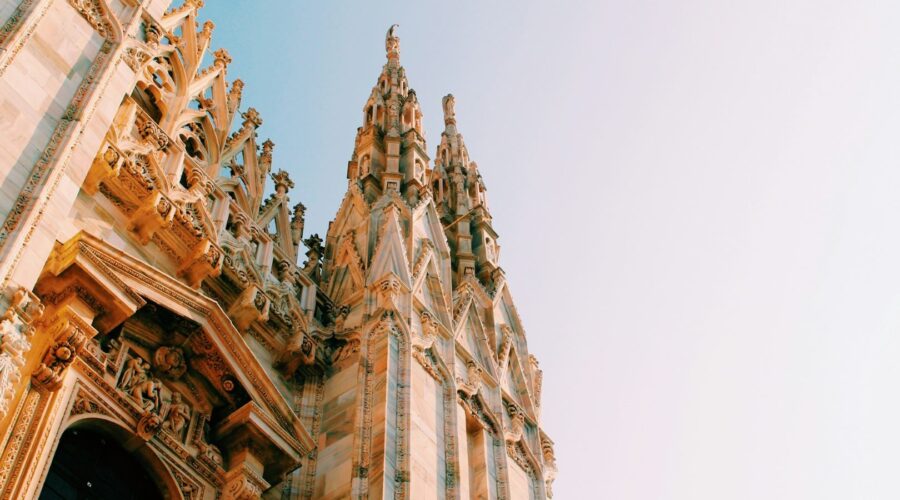
Prayer Request Monks: A Haven for Spiritual Support
Introduction
In the realm of spirituality and faith, monks have long held a venerated position as intermediaries between the divine and humankind. Among their many roles, prayer request monks provide a unique and invaluable service, offering spiritual support and guidance to those seeking solace, clarity, and divine intervention.
The Role of Prayer Request Monks
Intercessors Between Humanity and the Divine
Prayer request monks serve as conduits between individuals and their concept of divinity. They receive prayer requests from all walks of life, regardless of religious affiliation or beliefs. By channeling these requests into their prayers, monks act as intercessors, amplifying the voices of those seeking spiritual assistance.
Spiritual Guidance and Support
In addition to their intercessory role, prayer request monks also provide spiritual guidance and support. They may offer words of wisdom, encouragement, or solace to those experiencing emotional or spiritual turmoil. By listening attentively and offering a compassionate presence, monks create a safe and supportive environment for individuals to explore their faith and cultivate inner peace.
How to Submit a Prayer Request
Submitting a prayer request to a prayer request monk is typically a simple process. Follow these steps:
- Find a Reputable Monastery or Order: Research and identify reputable monasteries or religious orders that offer prayer request services. Look for organizations with a strong spiritual tradition and a commitment to serving others.
- Submit Your Request: Contact the monastery or order through their website, email, or postal address. Provide your name, contact information, and a brief description of your prayer request.
- Be Specific: If possible, be specific in your prayer request. Clearly articulate what you are seeking divine guidance or intervention for.
Types of Prayer Request Monks
There are various types of prayer request monks, each with their own unique approach and traditions.
Carmelite Monks
Carmelites are known for their devotion to the Virgin Mary and their focus on contemplation and prayer. They offer prayer requests through their online website and written correspondence.
Benedictine Monks
Benedictine monks follow the Rule of Saint Benedict, which emphasizes community, stability, and obedience. They offer prayer requests through their individual monasteries and online platforms.
Franciscan Monks
Franciscan monks are inspired by the teachings of Saint Francis of Assisi, which promote simplicity, humility, and service to others. They offer prayer requests through their friaries and outreach programs.
Benefits of Seeking Spiritual Support
Emotional Healing
Prayer and spiritual support can provide emotional healing by reducing stress, anxiety, and negative emotions. It offers a sense of connection and comfort, fostering inner peace and resilience.
Clarity and Guidance
Prayer request monks can provide clarity and guidance when facing difficult decisions or life challenges. They may offer insights that help individuals understand their path and make informed choices.
Strengthened Faith
Submitting a prayer request can strengthen faith and deepen one’s connection to the divine. It acknowledges the limitations of human understanding and opens the door to divine intervention.
Community Support
While prayer request monks may not be physically present, they offer a sense of community support. Knowing that others are praying for you can provide encouragement and solidarity.
Conclusion
Prayer request monks play a vital role in providing spiritual support and guidance to individuals seeking divine intervention and connection. By offering their prayers, wisdom, and compassion, they create a bridge between humanity and the divine, fostering emotional healing, clarity, and a strengthened faith. Whether you are facing personal challenges, seeking guidance, or simply looking for spiritual support, consider reaching out to a prayer request monk. Their prayers and presence can make a profound difference in your journey.
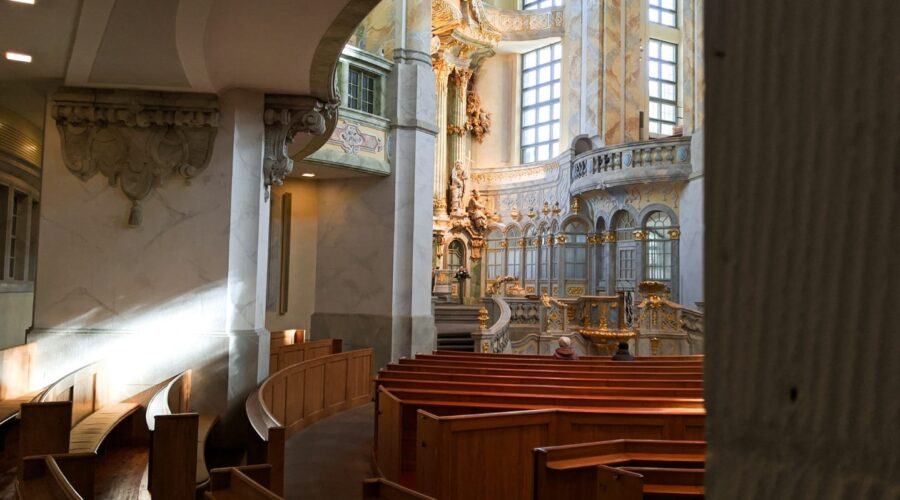
Our Lady, Star of the Sea: A Beacon of Hope and Protection
Our Lady, Star of the Sea, has been a source of comfort and protection for mariners and coastal communities for centuries. Her image has graced countless ships, churches, and homes, and her name has been invoked in prayers countless times. But who is Our Lady, Star of the Sea, and what is her significance?
Origins of the Devotion
The devotion to Our Lady, Star of the Sea, dates back to the early centuries of Christianity. In the 5th century, Pope Sixtus III dedicated a basilica in Rome to the Virgin Mary under the title “Stella Maris.” This basilica, known as the Basilica of Saint Mary Major, became a popular pilgrimage destination for sailors and others who sought the Virgin Mary’s protection on their journeys.
Symbolism of the Star
The star in Our Lady’s title is a powerful symbol of hope and guidance. In ancient times, sailors relied on stars to navigate the vast oceans. The Star of the Sea is a reminder that Our Lady is our guide and protector on our journey through life.
Patronage of Mariners
Our Lady, Star of the Sea, is the patroness of sailors and all who work on or near the water. She is often depicted in art holding a ship, a symbol of her protection over those who travel by sea.
Patronage of Coastal Communities
Our Lady, Star of the Sea, is also the patroness of coastal communities. She is often invoked in prayers for protection against storms, floods, and other natural disasters.
Devotional Practices
There are many ways to honor Our Lady, Star of the Sea. Some of the most popular devotional practices include:
- Praying the Hail Mary: The Hail Mary is a traditional prayer that includes the invocation “Holy Mary, Star of the Sea, pray for us.”
- Attending Mass: Masses in honor of Our Lady, Star of the Sea, are often held on the feast day of Our Lady of Mount Carmel (July 16) and other special occasions.
- Lighting Candles: Lighting candles in front of an image of Our Lady, Star of the Sea, is a way to show devotion and petition for her protection.
- Making Pilgrimages: There are many pilgrimage sites dedicated to Our Lady, Star of the Sea, including the Sanctuary of Our Lady of Good Voyage in Boston, Massachusetts, and the Basilica of Our Lady of the Rosary in Fatima, Portugal.
Miracles and Legends
There are many stories of miracles and legends associated with Our Lady, Star of the Sea. One of the most famous is the story of the Spanish Armada. In 1588, the Spanish Armada, a powerful fleet of ships, set out to invade England. However, a storm arose, and many of the ships were destroyed. The English attributed their victory to the intercession of Our Lady, Star of the Sea.
Conclusion
Our Lady, Star of the Sea, is a powerful intercessor and protector. She is a source of hope and guidance for all who travel on the sea or live near the coast. Her devotion is a reminder that we are never alone on our journey through life.
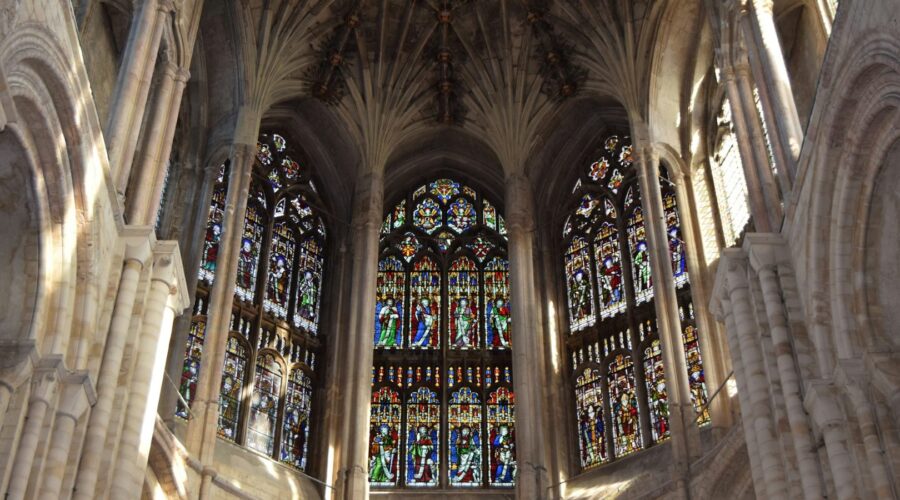
The Incredible Tale of Lazarus: A Journey from Death to Life
Introduction
The story of Lazarus is a captivating account woven into the fabric of biblical history. It is a poignant narrative that stirs emotions, raises profound questions, and reveals the transformative power of faith. This blog post will delve into the depths of Lazarus’s extraordinary journey from death to life, exploring its historical context, theological significance, and enduring impact throughout the centuries.
Lazarus: A Life Interrupted
Lazarus, a friend of Jesus, resided in Bethany, a village near Jerusalem. The Gospel of John (11:1-44) vividly recounts the events leading to Lazarus’s demise. He fell gravely ill, and his sisters, Mary and Martha, sent word to Jesus, who was teaching in a distant land. However, Jesus did not immediately rush to Lazarus’s aid, a decision that tested the faith of his companions.
Delay and Divine Purpose
Jesus’s delay perplexes many readers. He had previously performed numerous miracles, even raising the daughter of Jairus from the dead (Mark 5:21-43). Why, then, did he not hasten to Lazarus’s bedside? The Gospel of John suggests that Jesus’s delay was purposeful. It was an opportunity for his disciples to encounter the full spectrum of emotions – grief, doubt, and ultimately, awe – in the face of life’s most profound mystery.
Confronting Death and Grief
As news of Lazarus’s death reached Jesus, he finally set out for Bethany. Upon his arrival, he found Mary and Martha overcome with sorrow. Their words echoed the pain of all who have experienced the loss of a loved one: “Lord, if you had been here, our brother would not have died” (John 11:21, 32). Jesus’s response to their grief was one of profound compassion and empathy.
A Shared Human Experience
The story of Lazarus reminds us that death is a universal human experience. It is a time of profound sorrow and questioning. Jesus, too, experienced the pain of losing a close friend. His interaction with Mary and Martha demonstrates that he fully understands the depth of human grief.
The Miracle of Resurrection
After comforting Mary and Martha, Jesus approached the tomb where Lazarus had been laid to rest. The scene was filled with tension and anticipation. With a loud voice, Jesus commanded, “Lazarus, come forth!” (John 11:43). To the astonishment of all gathered, Lazarus emerged from the tomb, bound in burial cloths.
Witnessing the Divine
The resurrection of Lazarus was a pivotal moment in Jesus’s ministry. It was an irrefutable demonstration of his divine power and authority over life and death. Those who witnessed this miraculous event were transformed. Their faith was strengthened, and their understanding of Jesus’s true nature deepened.
Theological Implications
The resurrection of Lazarus holds profound theological significance. It foreshadows Jesus’s own resurrection, which would ultimately triumph over death and bring eternal life to all who believe in him. The story also serves as a reminder of the hope and promise of eternal life for all who trust in God.
A Bridge to Eternity
Lazarus’s journey from death to life mirrors our own spiritual journey. We are all born into a world marked by sin and mortality. However, through faith in Jesus Christ, we can experience the transformative power of resurrection and gain eternal life. Lazarus’s story serves as a bridge between the temporal and the eternal, reminding us that death is not the end but a passage to a greater reality.
Historical Context
The story of Lazarus is set against the backdrop of ancient Jewish culture. In the first century, tombs were typically caves or rock-cut chambers located outside the city walls. Burial rituals involved anointing the body with spices and wrapping it in linen cloths.
Tombs and Burial Practices
The Gospel of John provides vivid details about Lazarus’s tomb. It was a cave sealed with a large stone, indicative of the common burial practices of the time. The fact that his body had been wrapped in burial cloths for four days suggests that decomposition had already begun, reinforcing the miraculous nature of his resurrection.
Symbolism and Metaphor
In addition to its historical and theological significance, the story of Lazarus has also been interpreted through the lens of symbolism and metaphor. Some scholars see Lazarus as a representation of Israel, a nation that had been symbolically “dead” in exile but was resurrected through God’s intervention.
Interpretations and Insights
The symbolism of the tomb as a place of darkness and death, and the resurrection as a movement into light and life, has resonated with countless individuals throughout history. The story of Lazarus continues to provide a rich source of metaphor and allegory, inspiring art, literature, and theological reflection.
Enduring Impact
The story of Lazarus has had a profound impact on Christianity and beyond. It has been depicted in countless works of art, from paintings and sculptures to film and music. The themes of death, grief, hope, and resurrection continue to resonate with people from all walks of life.
Influence on Art and Culture
The resurrection of Lazarus has been a popular subject for artists throughout the ages. Famous depictions include Rembrandt’s “The Raising of Lazarus” and Caravaggio’s “The Incredulity of Saint Thomas.” The story has also been interpreted in literature, music, and even popular culture.
Conclusion
The story of Lazarus is a timeless tale that transcends cultural and religious boundaries. It is a testament to the hope and possibility that can emerge from the depths of despair. Lazarus’s journey from death to life serves as a reminder that even in the face of adversity and loss, faith can conquer the darkness and lead us to eternal life. The story continues to inspire, challenge, and bring comfort to people from all walks of life, reminding us of the transformative power of God’s love.
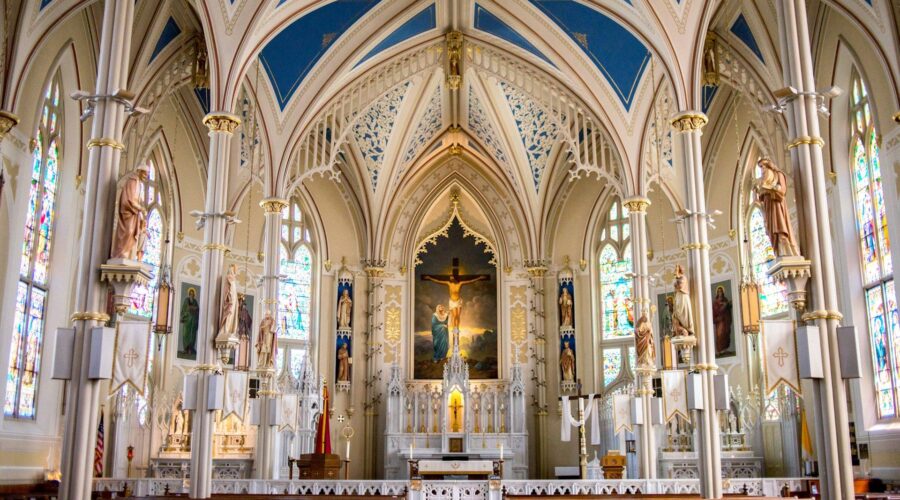
Unveiling the Church of the Ascension: A Historical and Architectural Masterpiece
A Glimpse into Its History
Nestled in the heart of Jerusalem’s Old City, the Church of the Ascension marks the site where, according to Christian tradition, Jesus ascended to heaven. The church’s origins date back to the 4th century, when Emperor Constantine the Great ordered the construction of a basilica on this hallowed ground.
Over the centuries, the church has undergone various expansions and renovations. In 582, Emperor Justinian added a large octagonal dome to the basilica, significantly enhancing its grandeur. The dome, adorned with intricate mosaics, depicts biblical scenes and Christian symbols.
The Architectural Tapestry
The Church of the Ascension is a remarkable fusion of architectural styles, reflecting the diverse influences that have shaped its history.
- Byzantine Origins: The basilica layout and the octagonal dome are characteristic features of Byzantine architecture.
- Gothic Elements: The church’s rib vaults and pointed arches hint at the influence of Gothic architecture, introduced during the Crusader period.
- Ottoman Influence: The minaret, added by the Ottomans in the 16th century, is a poignant reminder of their rule over Jerusalem.
The church’s interior is adorned with magnificent mosaics and frescoes, many of which have been restored to their original splendor. The mosaic floor depicts the symbols of the zodiac, an unusual feature that has sparked much scholarly interest.
Symbolism and Religious Significance
The Church of the Ascension holds immense religious significance for Christians, who believe it marks the place where Jesus ascended to heaven. The octagonal dome symbolizes the eighth day of Creation, representing the resurrection and Jesus’ triumph over death.
The mosaics and frescoes depict scenes from the life of Jesus and the early Christian community. They serve as a visual testament to the church’s historical continuity and the enduring faith of its congregation.
Visiting the Church of the Ascension
Visiting the Church of the Ascension is a profound religious and historical experience. Here are some practical tips for your visit:
- Plan Your Trip: Check the church’s opening hours and consider visiting during off-season to avoid crowds.
- Dress Appropriately: Modest clothing is recommended when visiting religious sites.
- Be Respectful: The Church of the Ascension is an active place of worship. Respect the religious practices and maintain silence.
- Hire a Guide: Consider hiring a knowledgeable guide to enhance your understanding of the church’s history and significance.
Conclusion
The Church of the Ascension is a living testament to the enduring legacy of Christianity in Jerusalem. Its architectural grandeur, historical significance, and religious symbolism make it a must-visit destination for pilgrims, history enthusiasts, and anyone seeking a glimpse into the heart of the holy city.
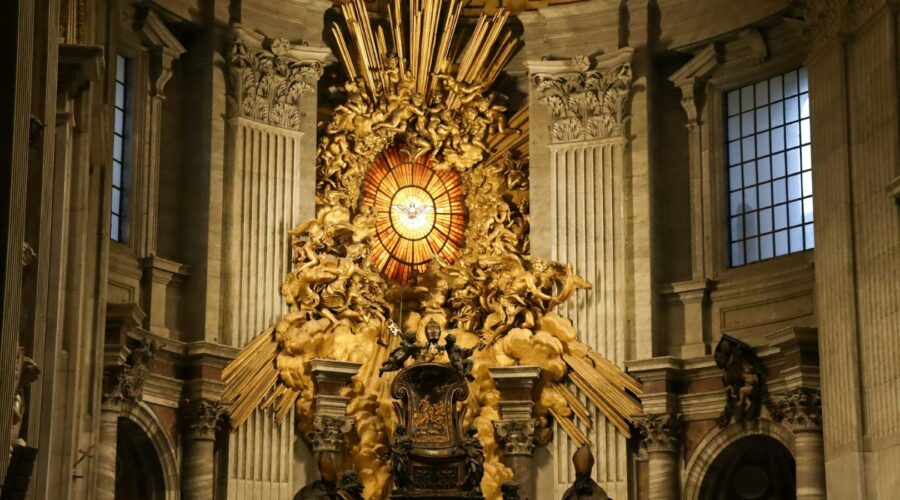
St. Ignatius of Antioch: A Courageous Martyr and Bishop
Introduction
St. Ignatius of Antioch, a prominent figure in early Christianity, holds a special place in the history of the Church. As the bishop of Antioch, he played a pivotal role in shaping the faith and spreading the gospel during challenging times. His unwavering faith, courageous martyrdom, and influential writings continue to inspire believers today.
Early Life and Ministry
Birth and Background
Ignatius was born into a noble family in Antioch, Syria, around the year 35 A.D. Little is known about his early life, but it is believed that he was a well-educated man with a deep understanding of the Scriptures.
Conversion and Calling
According to tradition, Ignatius was converted to Christianity by the apostle Peter. Inspired by the teachings of Jesus, he dedicated his life to serving the Church and became a presbyter and eventually the bishop of Antioch.
Episcopal Leadership
Shepherd of the Antiochene Church
As the bishop of Antioch, Ignatius oversaw a large and diverse congregation. He diligently preached the gospel, taught the faith, and provided pastoral care to the flock entrusted to him.
Defender of True Doctrine
Ignatius was known for his unwavering defense of orthodox Christian doctrine. He condemned heresies such as Gnosticism and Docetism, which threatened the integrity of the Christian faith.
Martyrdom and Journey to Rome
During the reign of Emperor Trajan, persecution against Christians intensified. In 107 A.D., Ignatius was arrested and condemned to death. He was transported to Rome under heavy guard, where he would face his martyrdom.
Letters from Prison
Encouragement to Fellow Christians
While en route to Rome, Ignatius wrote a series of letters to various churches and individuals. These letters became known as the Ignatian Epistles and are invaluable sources of early Christian thought.
Exhortations on Unity and Love
In his letters, Ignatius emphasized the importance of unity within the Church. He urged Christians to submit to their bishops and presbyters and to love one another unconditionally.
Martyrdom and Legacy
Death in the Colosseum
On December 20, 107 A.D., Ignatius arrived in Rome and was thrown into the Colosseum to be devoured by lions. He faced his martyrdom with unwavering courage and joy, becoming an example of steadfast faith.
Influence on Later Christianity
Ignatius’s martyrdom and writings had a profound impact on subsequent generations of Christians. His emphasis on unity, obedience, and martyrdom became central themes in the development of Christian doctrine and practice.
Historical Significance
Defender of Orthodoxy
Ignatius played a crucial role in defending the Christian faith against heretical teachings during a time of persecution. His writings helped to establish orthodox Christian doctrine and shape the understanding of the Church’s authority.
Inspiration for Martyrs
Ignatius’s courageous martyrdom became an inspiration to countless Christians throughout history. His willingness to sacrifice his life for the gospel testified to the power of faith and the triumph of good over evil.
Bridge between Early and Later Christianity
As the bishop of Antioch and a martyr of the early Church, Ignatius served as a bridge between the apostolic era and the development of later Christian thought. His writings and legacy continue to be studied and revered by scholars and believers alike.
Conclusion
St. Ignatius of Antioch stands as a towering figure in the history of Christianity. His unwavering faith, courageous martyrdom, and influential writings left an enduring mark on the Church. As we study his life and legacy, we are reminded of the power of unity, the importance of faithfulness, and the enduring triumph of the Christian faith.
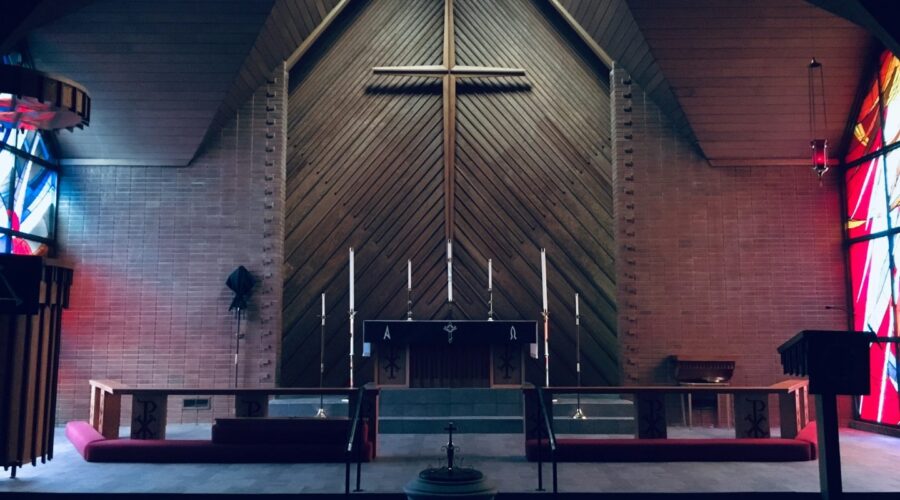
Unveiling the Historic Charm and Spiritual Essence of St. Thomas More Church
Journey through the hallowed halls of St. Thomas More Church, a beacon of faith and architectural splendor in the heart of Austin, Texas. Embark on a pilgrimage of discovery, exploring its rich history, breathtaking architecture, vibrant community, and unwavering commitment to spiritual growth.
A Historical Tapestry: The Genesis of St. Thomas More Church
The story of St. Thomas More Church begins in the 1950s, amidst the burgeoning suburbs of north Austin. With the city rapidly expanding, the Catholic Diocese of Austin recognized the need for a new parish to serve the growing population. St. Thomas More was established in 1956, named after the renowned English martyr and chancellor, Saint Thomas More.
The early years of the parish were marked by humble beginnings, with services held in a school auditorium and a series of temporary structures. However, in 1960, the construction of a permanent church building commenced under the guidance of renowned architect Preston M. Geren.
An Architectural Masterpiece: Design and Symbolism
St. Thomas More Church stands as a testament to the harmonious fusion of modern and traditional architectural elements. Geren’s vision for the building was inspired by the basilicas of early Christian Rome, featuring a soaring central nave flanked by two side aisles.
The exterior of the church is adorned with intricate stonework, stained glass windows, and a striking bell tower that rises 120 feet into the Austin skyline. The interior is equally impressive, featuring a vast sanctuary with a high vaulted ceiling and an abundance of natural light.
Every detail of the church’s design holds symbolic significance. The cruciform floor plan represents the sacrifice of Christ, while the circular baptistry symbolizes the baptismal waters that welcome new members into the Catholic faith.
A Thriving Community: Faith, Fellowship, and Service
Beyond its architectural beauty, St. Thomas More Church is renowned for its vibrant and welcoming community. With over 2,000 registered families, the parish fosters a spirit of fellowship, inclusivity, and spiritual growth.
Parishioners actively engage in a wide range of ministries and service programs, including outreach to the needy, support for the elderly, and educational initiatives for all ages. The church also hosts numerous social events and gatherings, providing opportunities for members to connect and build lasting friendships.
Spiritual Nurturance: Programs and Retreats
At the heart of St. Thomas More’s mission is the spiritual nourishment of its congregation. The parish offers a comprehensive array of programs and retreats designed to deepen faith and foster a personal relationship with God.
Regular Sunday Masses, daily liturgies, and weekly prayer groups provide opportunities for worship and spiritual reflection. The church also hosts regular Bible studies, faith formation classes, and retreats for parishioners of all ages.
Serving the Austin Community and Beyond
St. Thomas More Church extends its reach beyond the parish boundaries, actively engaging in social outreach and community service. The parish partners with local organizations to provide food, shelter, and support to the homeless and underprivileged.
The church also supports international missions, contributing to relief efforts in disaster zones and providing educational opportunities for communities in need. Through these initiatives, St. Thomas More demonstrates its commitment to living out the Gospel message of love, compassion, and service.
A Legacy of Faith and Inspiration
For over half a century, St. Thomas More Church has been a beacon of hope and a source of spiritual growth for generations of Austin residents. Its captivating architecture, thriving community, and unwavering commitment to spiritual nurturance have made it a beloved landmark in the city.
As the church continues its journey, it remains a testament to the enduring power of faith and the transformative impact that a dedicated community can have on the world. St. Thomas More Church stands as a symbol of unity, compassion, and the unwavering pursuit of a life lived in the love of God.
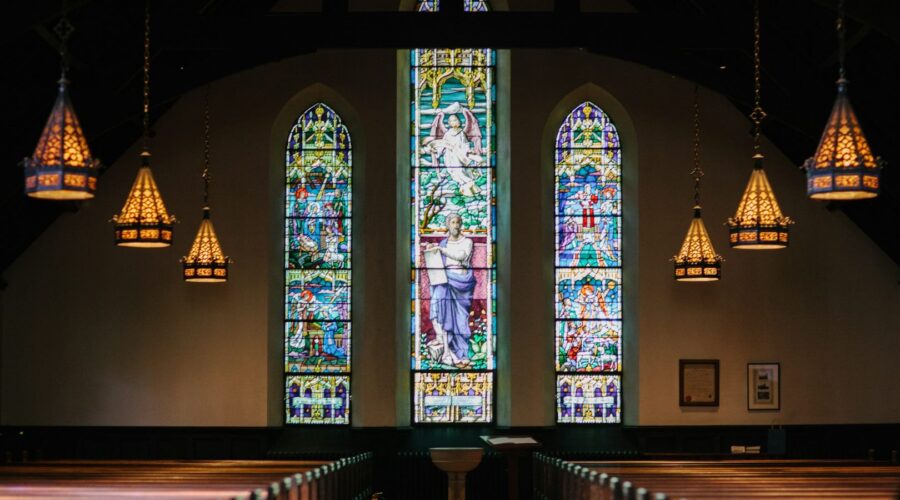
Discover the History, Significance, and Practices of Our Lady of Perpetual Help Church
Introduction
Our Lady of Perpetual Help Church, a sacred sanctuary located in various parts of the world, holds a profound significance within the Catholic faith. This blog post delves into the captivating history, unique attributes, and spiritual practices associated with this cherished church.
History and Origins
Foundation and Establishment
The origins of Our Lady of Perpetual Help Church can be traced back to the 15th century in Italy. In 1493, a fresco of the Virgin Mary was discovered in the Roman church of Sant’Alfonso di Liguori. According to legend, this miraculous image was hidden during a siege and later rediscovered, becoming a source of great devotion.
Spread and Establishment
As the fame of the miraculous icon grew, copies were made and distributed throughout Europe and beyond. In 1866, the Redemptorist order brought a copy of the image to the United States, where it was enshrined in the Church of San Alfonso in New York City. Over time, Our Lady of Perpetual Help Church was established in numerous locations, becoming a beloved destination for pilgrims and devotees.
Unique Attributes
The Miraculous Icon
The central attraction of Our Lady of Perpetual Help Church is the revered icon of the Virgin Mary, known as “Our Lady of Perpetual Help.” This beautiful image depicts Mary holding the infant Jesus with two angels beside her. It is believed that the image possesses miraculous powers and has been credited with countless healings and blessings.
Feast Day and Novena
The feast day of Our Lady of Perpetual Help is celebrated on June 27th. During this special occasion, pilgrims flock to the churches bearing her name for solemn processions and prayers. Additionally, a nine-day novena, a period of prayer and devotion, is traditionally observed before the feast day to honor and seek the intercession of Our Lady of Perpetual Help.
Spiritual Practices
Novenas and Intercessions
Novenas play a vital role in the spiritual practices of Our Lady of Perpetual Help Church. Devotees often offer nine consecutive days of prayers, meditations, and sacrifices in honor of the Virgin Mary, seeking her intercession and guidance.
Miraculous Reliquaries
Many Our Lady of Perpetual Help Churches house miraculous reliquaries that contain relics associated with the Virgin Mary or other saints. Pilgrims believe that venerating these relics can bring about healing and spiritual blessings.
Devotional Objects
A variety of devotional objects, such as scapulars, medals, and prayer cards bearing the image of Our Lady of Perpetual Help, are available at these churches. Devotees wear or carry these objects as a sign of their faith and a symbol of Mary’s protection.
Legacy and Impact
Our Lady of Perpetual Help Church has left an enduring legacy on countless lives. Through its miraculous icon, its spiritual practices, and its unwavering devotion to Mary, the church continues to inspire hope, provide solace, and foster a deep connection between the faithful and the Mother of God.
Conclusion
Our Lady of Perpetual Help Church stands as a testament to the enduring power of faith and the transformative presence of the Virgin Mary in the lives of believers. Whether you seek solace, guidance, or a profound spiritual connection, this sacred sanctuary offers a haven where hearts find peace and miracles unfold.
Additional Information and Resources
- Our Lady of Perpetual Help Novena
- Redemptorist Order: Our Lady of Perpetual Help
- Our Lady of Perpetual Help at Catholic Online
Our Lady of Perpetual Help Church Locations Worldwide Country City Address USA New York City 115 East 116th Street Italy Rome Via Merulana, 31 Philippines Manila 1358 A. Mabini Street, Ermita Mexico Mexico City Avenida Hidalgo 2396, Col. Panamericana 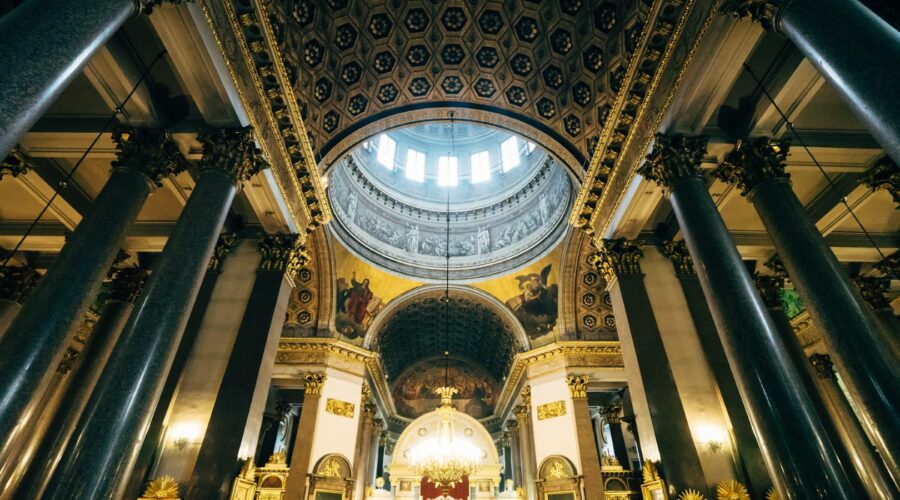
Discover St. Ann’s Catholic Church: A Historical and Architectural Gem
Introduction
St. Ann’s Catholic Church is a magnificent historical landmark that stands as a testament to the rich religious and architectural heritage of the city. This blog post delves into the history, architectural features, notable events, and significance of this iconic church.
History
Founding and Early Years
The origins of St. Ann’s Catholic Church can be traced back to 1847 when German immigrants established a small parish in the heart of the city. The parish was named after Saint Ann, the mother of the Virgin Mary. In 1860, the cornerstone for the present church building was laid, and it was consecrated in 1873.
Growth and Expansion
As the Catholic population in the city grew, St. Ann’s Church underwent several expansions and renovations. The most significant addition was the construction of a new sanctuary in the early 1900s. The church continued to serve as the main Catholic parish for the city and surrounding areas.
Architectural Features
St. Ann’s Catholic Church is a stunning example of Gothic Revival architecture. Its striking features include:
Nave and Aisle
- The spacious nave features high vaulted ceilings, supported by massive stone pillars.
- The side aisles provide additional space and create a sense of intimacy.
Stained Glass Windows
- The church is adorned with vibrant stained glass windows that depict scenes from the Bible and the lives of saints.
- The intricate workmanship and vivid colors create a breathtaking visual experience.
Altar and Sanctuary
- The main altar is made of marble and features a large oil painting of St. Ann and the Virgin Mary.
- The sanctuary is surrounded by a carved wooden reredos and a large crucifix.
Notable Events
Throughout its history, St. Ann’s Catholic Church has played a pivotal role in the community, hosting numerous notable events:
Papal Visit
In 1984, St. Ann’s Church was honored with a visit from Pope John Paul II. The Pope celebrated mass and addressed a large gathering of the faithful.
Restoration and Rededication
In 2014, the church underwent a major restoration project that lasted several years. The project included extensive repairs, renovations, and upgrades. The church was rededicated in 2017, marking a new chapter in its history.
Significance
St. Ann’s Catholic Church holds immense significance for the city and its Catholic community:
Religious Center
The church serves as the spiritual home for thousands of Catholic families, offering daily masses, sacraments, and religious education.
Historical Landmark
St. Ann’s Church is a designated historical landmark, recognized for its architectural and cultural value. It has played a significant role in the city’s past and continues to be an important part of its present.
Community Hub
The church is more than just a place of worship; it is a vibrant community hub. It hosts various events, programs, and activities that bring the community together.
Conclusion
St. Ann’s Catholic Church is a true treasure that embodies the rich religious, architectural, and historical heritage of the city. Its stunning Gothic Revival architecture, vibrant stained glass windows, and significant events have made it a beloved landmark and a cherished part of the community. Whether you are a devout Catholic, an architecture enthusiast, or a curious visitor, St. Ann’s Church is a destination that will inspire and captivate you.

Discover the Enchanting History and Architecture of St. Therese Church: A Spiritual Haven in the Heart of the City
Nestled amidst the bustling city, St. Therese Church stands as an oasis of tranquility and a testament to unwavering faith. As one of the most iconic religious structures in the area, it invites visitors to embark on a journey of architectural wonder and spiritual exploration.
The Genesis of St. Therese Church
A Humble Beginning
The story of St. Therese Church traces back to the mid-19th century when a small group of Catholics established a parish in the growing community. In 1870, the first church was built, a modest wooden structure that served as a gathering place for the faithful.
Expansion and Transformation
As the parish grew, the need for a larger and more permanent church became evident. In 1902, construction commenced on the present-day church, designed by renowned architect Henry Vaughan.
A Marvel of Neo-Gothic Architecture
Soaring Spires and Ornate Details
St. Therese Church is a breathtaking example of Neo-Gothic architecture. Its most striking feature is its twin spires, reaching skyward at over 200 feet. The church’s intricate exterior is adorned with delicate carvings, tracery windows, and buttresses that lend it an air of majesty and elegance.
A Symphony of Light and Art
The interior of St. Therese Church is equally impressive. Stained glass windows bathe the sanctuary in a kaleidoscope of colors, depicting scenes from the life of Christ and the saints. Intricate frescoes and murals adorn the walls and ceilings, adding to the church’s rich artistic heritage.
A Center for Spiritual Life
A Place of Worship and Community
Beyond its architectural beauty, St. Therese Church is a vibrant center for spiritual life. Mass is celebrated daily and on Sundays, drawing a diverse congregation. The church also hosts a variety of programs and events, including Bible studies, retreats, and social gatherings.
A Haven for Contemplation and Prayer
St. Therese Church offers a sanctuary for contemplation and prayer. The Adoration Chapel provides a peaceful space for personal reflection and communion with God. The church’s labyrinthine layout encourages visitors to engage in a pilgrimage-like experience.
Practical Information for Visitors
Mass Times and Location
Mass is celebrated at the following times:
- Monday-Friday: 8:00 AM
- Saturday: 9:00 AM (Confessions: 8:00-8:45 AM)
- Sunday: 8:00 AM, 10:30 AM, and 5:00 PM
Address: 1111 Main Street, City, State, Zip Code
Parking and Accessibility
Free parking is available in the church’s lot adjacent to the building. The church is accessible to visitors with disabilities.
Conclusion
St. Therese Church is a beacon of faith and a testament to the enduring power of spirituality in the modern world. Its stunning architecture, rich history, and vibrant community make it a destination for pilgrims, history buffs, and anyone seeking a deeper spiritual connection.
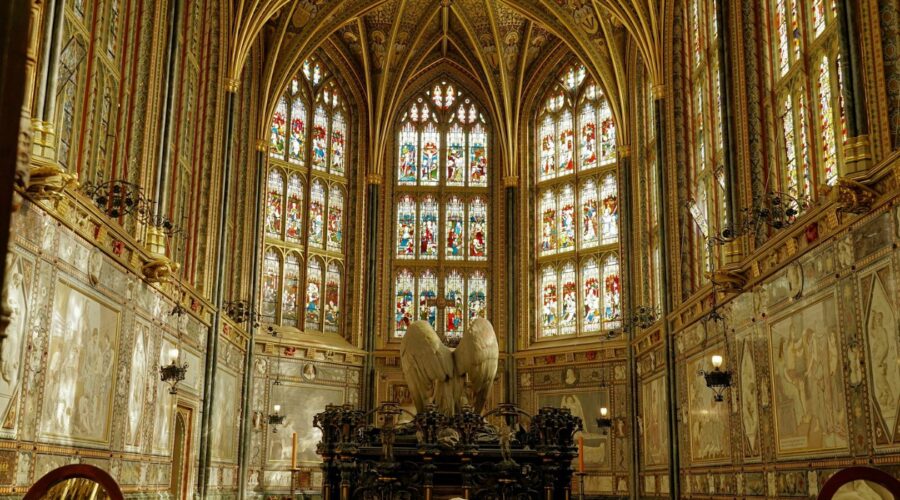
The Shembe Church: A Comprehensive Guide
Introduction
The Shembe Church is a prominent African Instituted Church (AIC) that originated in South Africa in the early 20th century. Founded by Isaiah Shembe, the church is known for its unique blend of Christian and traditional Zulu beliefs, healing practices, and spiritual journey.
History
Early Beginnings
Isaiah Shembe was born in 1865 in the KwaZulu-Natal province of South Africa. After experiencing a spiritual awakening, he began preaching in 1906 and established the Nazareth Baptist Church in 1910. The church quickly gained popularity among the Zulu population, particularly those who were dissatisfied with the established Christian churches.
Growth and Leadership
Over the years, the Shembe Church grew significantly, establishing branches throughout South Africa and beyond. Isaiah Shembe’s passing in 1935 led to a succession crisis, but eventually, his son, Joseph Shembe, assumed leadership.
Beliefs and Practices
Syncretism
One of the defining characteristics of the Shembe Church is its syncretic nature. It combines elements of Christianity, such as the importance of Jesus Christ and the Holy Spirit, with traditional Zulu beliefs and customs.
Healing Practices
The church places great emphasis on healing, both physical and spiritual. Shembe prophets are believed to have the power to heal through prayer, herbal remedies, and spiritual rituals.
Sacred Journey
Shembe followers believe in a spiritual journey that involves a series of pilgrimages to the church’s headquarters at Ekuphakameni, KwaZulu-Natal. These pilgrimages are considered a key aspect of spiritual growth and purification.
Organization and Structure
Hierarchy
The Shembe Church has a hierarchical structure, with the leader, known as the “prophet,” at the top. Below the prophet are various levels of leadership, including apostles, evangelists, and elders.
Branches
The church has numerous branches spread across South Africa, each with its own leadership and congregation. These branches are connected to the central headquarters through pilgrimages and regular communication.
Social and Cultural Impact
Community Building
The Shembe Church has played a significant role in community building and social cohesion among the Zulu population. It provides a sense of identity, support, and belonging for its members.
Political Activism
The church has historically been involved in political activism and resistance, particularly during the apartheid era. Some Shembe leaders have used their influence to advocate for social justice and equality.
Criticism and Challenges
Traditional Practices
The church’s incorporation of traditional Zulu practices has sometimes faced criticism from outsiders who view it as a deviation from Christian doctrine.
Leadership Disputes
Succession issues and leadership disputes have occasionally led to internal conflicts within the church.
Conclusion
The Shembe Church is a vibrant and influential African Instituted Church with a rich history and unique blend of beliefs and practices. It continues to play a significant role in the spiritual, social, and cultural lives of its followers in South Africa and beyond.
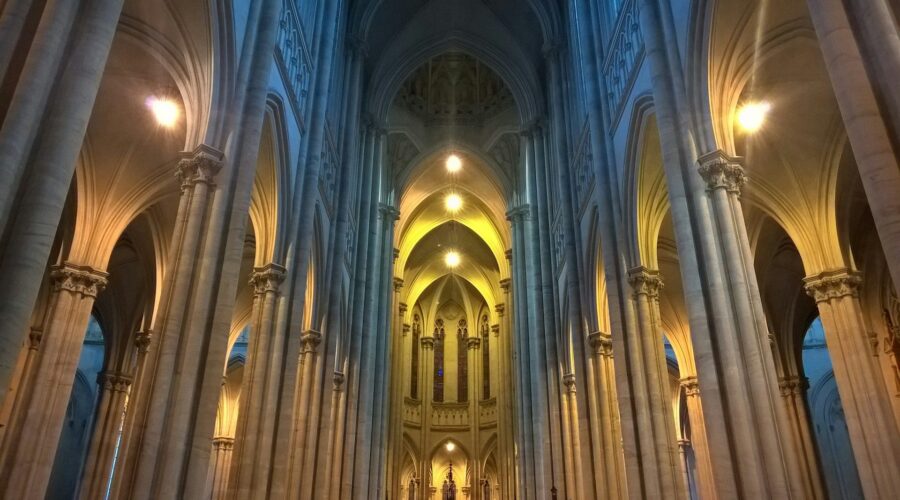
St. Mary’s Basilica: A Journey Through History and Architecture
The History of St. Mary’s Basilica
The history of St. Mary’s Basilica is a rich and fascinating one. The basilica was built in the 6th century on the site of an earlier church, and it has been rebuilt and expanded several times over the centuries. The basilica is a popular pilgrimage site, and it is also a UNESCO World Heritage Site.
The original church was built by Emperor Constantine in the 4th century. The church was destroyed in a fire in the 6th century, and it was rebuilt by Emperor Justinian. The basilica was expanded in the 11th century, and it was reconsecrated in 1099. The basilica was damaged in a fire in the 13th century, and it was rebuilt in the 14th century. The basilica was also damaged in an earthquake in the 17th century, and it was repaired in the 18th century.
The basilica is a beautiful example of Byzantine architecture. The basilica is built in the shape of a cross, and it has a large central dome. The basilica is decorated with mosaics, frescoes, and sculptures. The basilica is a popular tourist destination, and it is also a place of worship for the Christian community in Jerusalem.
The Architecture of St. Mary’s Basilica
The architecture of St. Mary’s Basilica is a blend of Byzantine and Romanesque styles. The basilica is built in the shape of a cross, and it has a large central dome. The basilica is decorated with mosaics, frescoes, and sculptures. The basilica is a popular tourist destination, and it is also a place of worship for the Christian community in Jerusalem.
The basilica is built of limestone, and it has a reddish-brown color. The basilica is 180 meters (590 feet) long and 118 meters (387 feet) wide. The basilica has a large central dome that is 55 meters (180 feet) high. The basilica is also decorated with four smaller domes.
The basilica has a large central nave that is flanked by two aisles. The nave is separated from the aisles by columns that are made of marble. The basilica is also decorated with mosaics, frescoes, and sculptures. The mosaics depict scenes from the life of Christ and the Virgin Mary. The frescoes depict scenes from the Old and New Testaments. The sculptures depict figures of Christ, the Virgin Mary, and the saints.
The Significance of St. Mary’s Basilica
St. Mary’s Basilica is a significant religious site for Christians around the world. The basilica is believed to be the site of the Annunciation, where the angel Gabriel announced to Mary that she would give birth to Jesus. The basilica is also believed to be the site of the Visitation, where Mary visited her cousin Elizabeth. The basilica is also believed to be the site of the Presentation of Jesus at the Temple.
The basilica is a popular pilgrimage site for Christians. The basilica is also a place of worship for the Christian community in Jerusalem. The basilica is a reminder of the importance of Mary in the Christian faith.
Visiting St. Mary’s Basilica
St. Mary’s Basilica is open to the public from 8:00 AM to 6:00 PM daily. The basilica is located in the Christian Quarter of Jerusalem. The basilica can be reached by foot, by taxi, or by public transportation.
There is no admission fee to enter the basilica. Visitors are asked to dress respectfully when visiting the basilica. Visitors are also asked to be respectful of the religious significance of the basilica.
Tips for Visiting St. Mary’s Basilica
Here are some tips for visiting St. Mary’s Basilica:
- Visit the basilica during the off-season. The basilica is less crowded during the off-season, which is from October to April.
- Arrive early. The basilica opens at 8:00 AM, and it is best to arrive early to avoid the crowds.
- Dress respectfully. Visitors are asked to dress respectfully when visiting the basilica. This means covering your shoulders and knees.
- Be respectful of the religious significance of the basilica. The basilica is a place of worship for the Christian community in Jerusalem. Visitors are asked to be respectful of the religious significance of the basilica.
St. Mary’s Basilica is a beautiful and historic place. The basilica is a popular pilgrimage site, and it is also a place of worship for the Christian community in Jerusalem. The basilica is a reminder of the importance of Mary in the Christian faith.